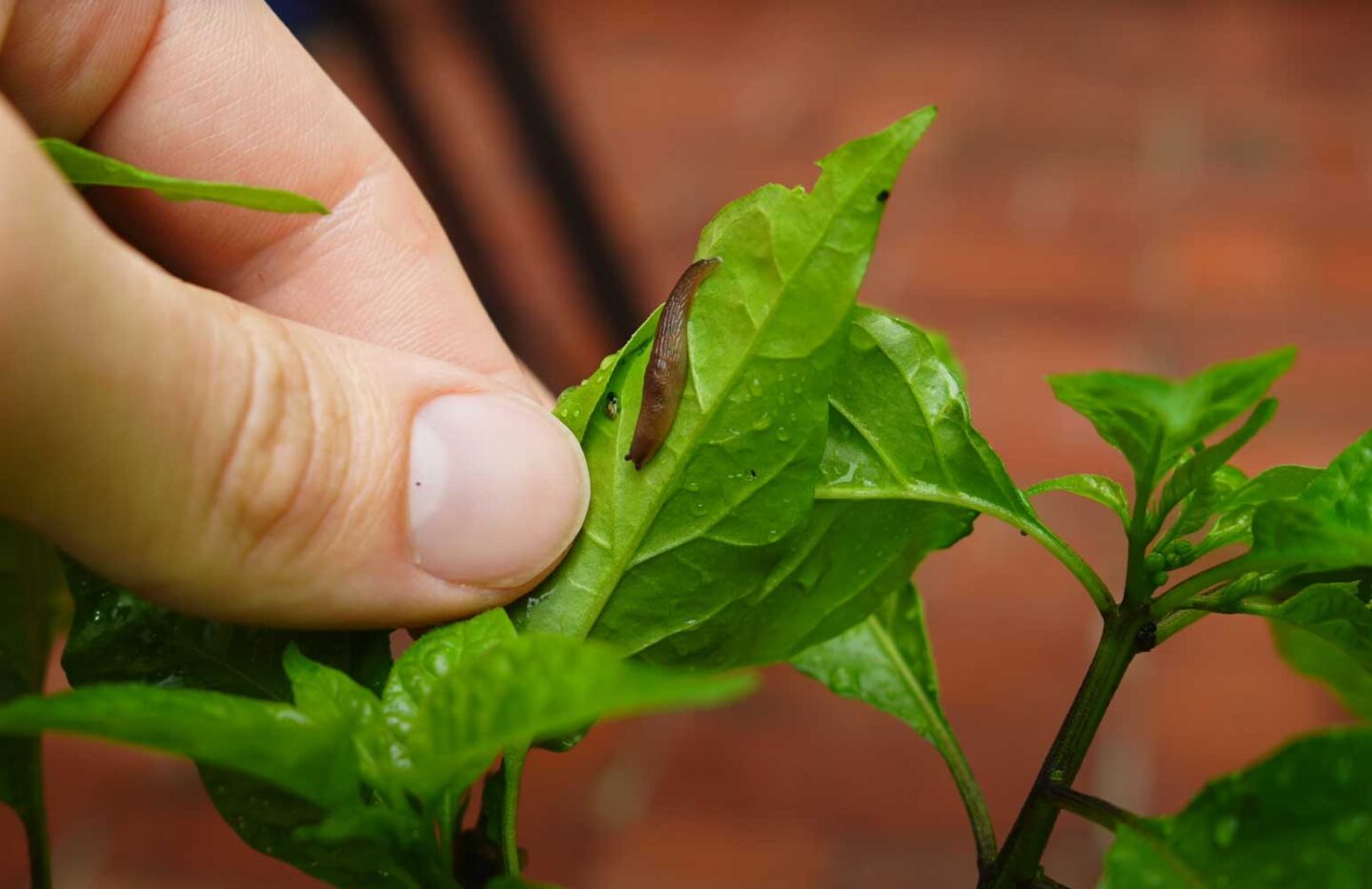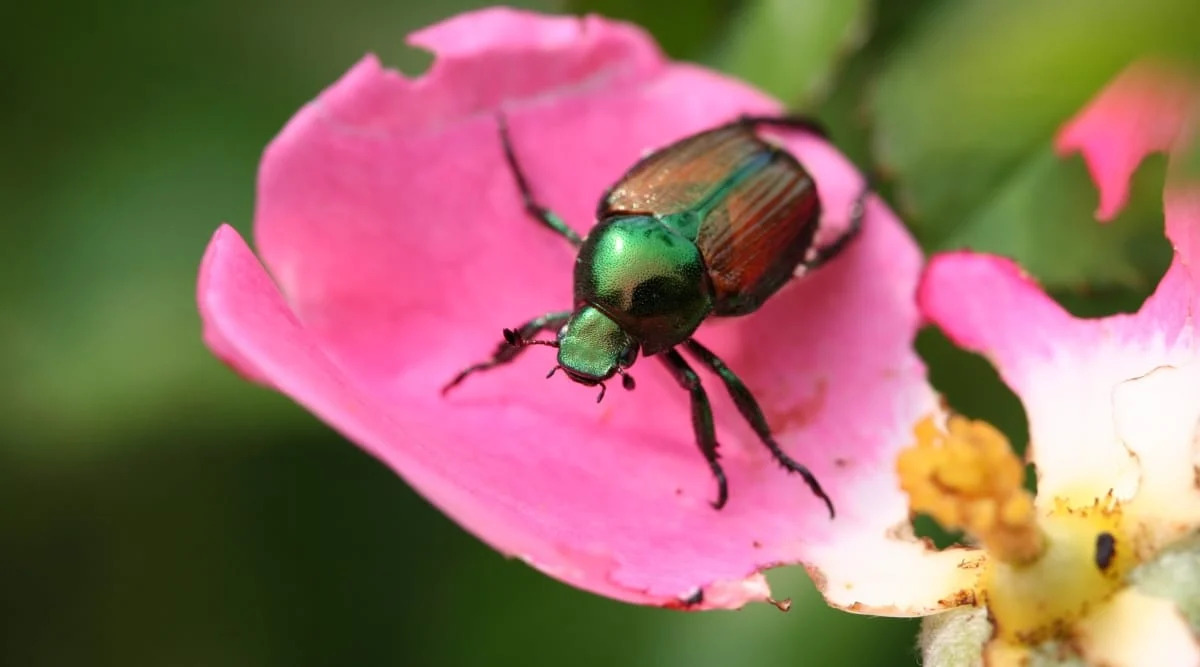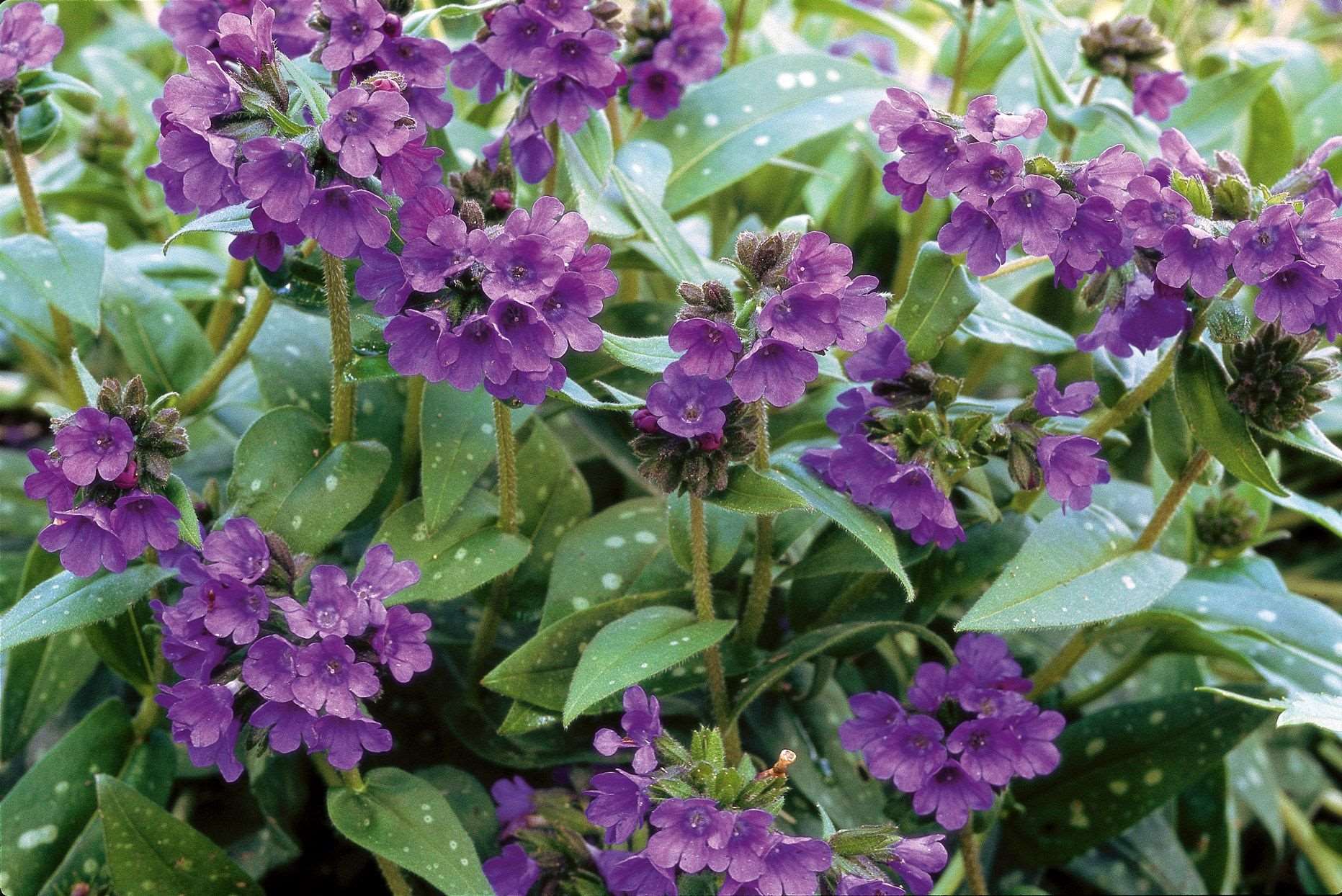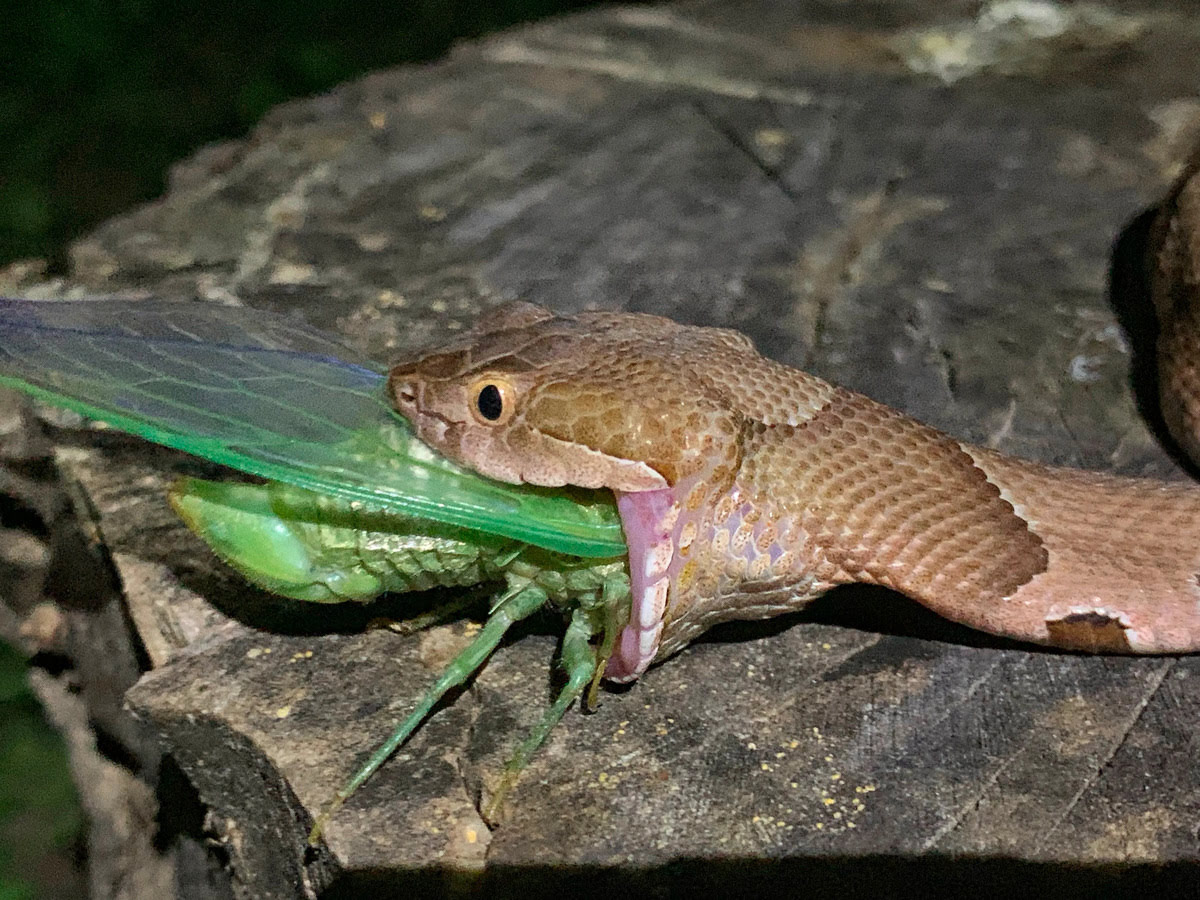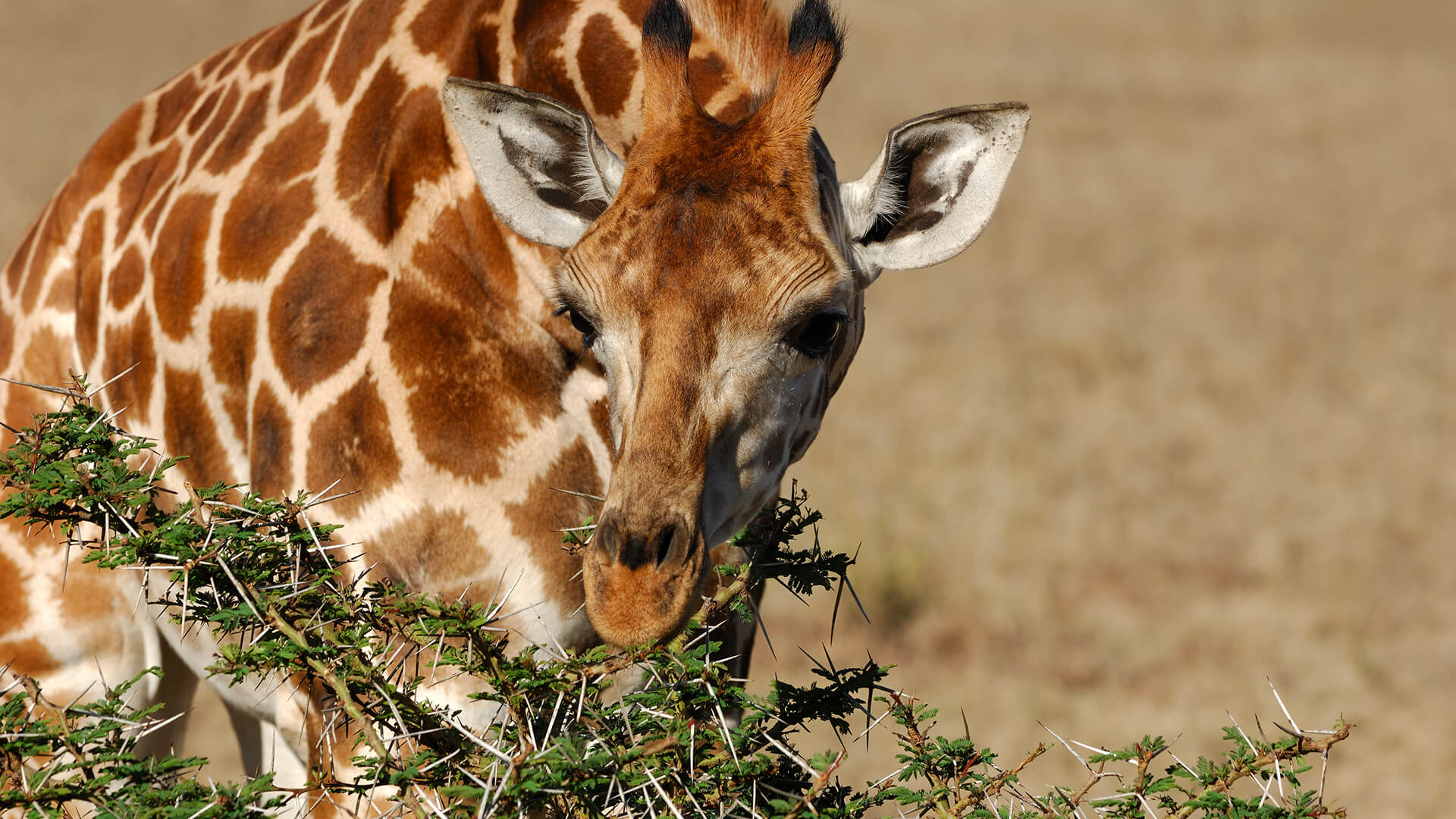Home>Types of Gardening>Ornamental Gardening>What Eats Shrubs In The Savanna
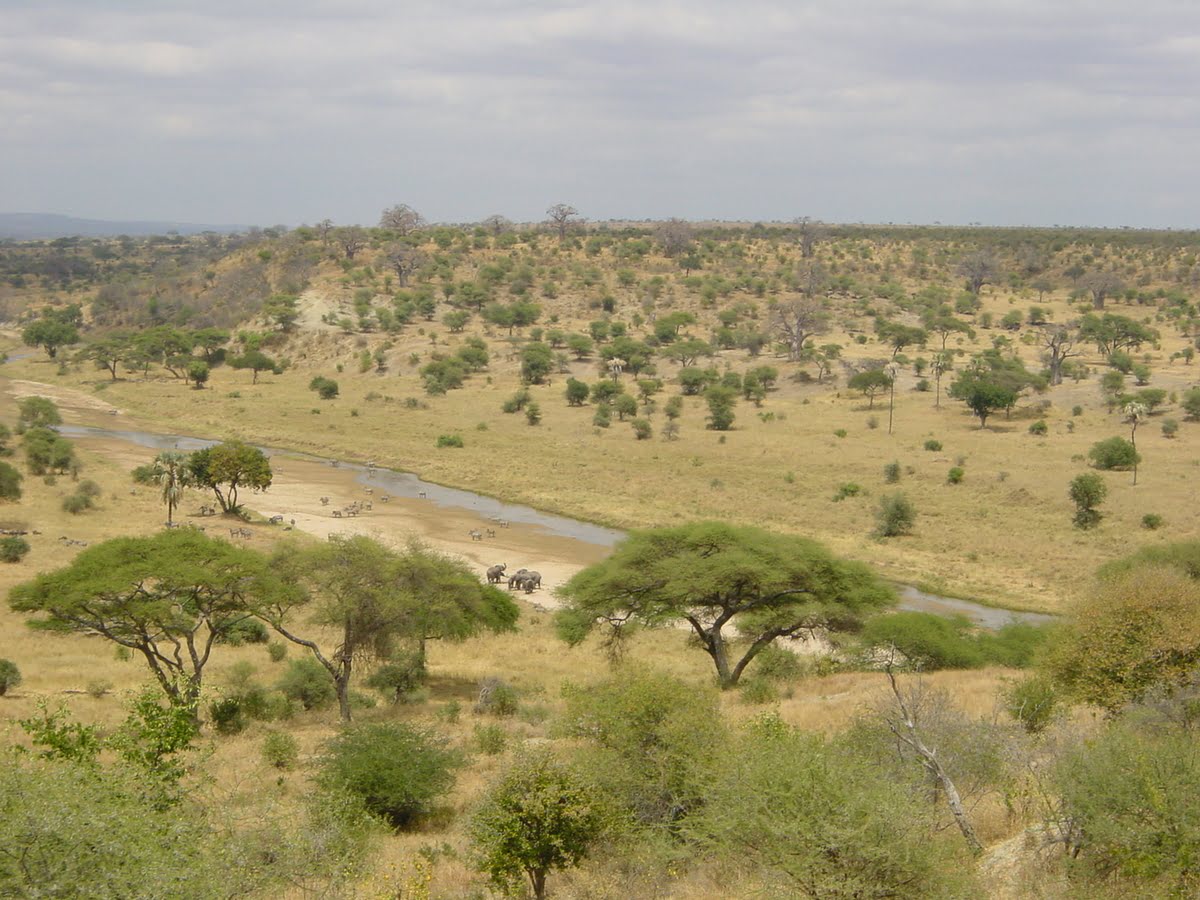

Ornamental Gardening
What Eats Shrubs In The Savanna
Published: October 18, 2023
Discover the fascinating world of ornamental gardening in the savanna ecosystem and learn about the diverse array of creatures that feast on shrubs in this unique habitat.
(Many of the links in this article redirect to a specific reviewed product. Your purchase of these products through affiliate links helps to generate commission for Chicagolandgardening.com, at no extra cost. Learn more)
Table of Contents
Introduction
Welcome to the fascinating world of the savanna, where lush grasslands stretch for miles and a diverse range of plants and animals thrive. In this vibrant ecosystem, the delicate balance between flora and fauna is essential for its survival. While plants play a crucial role in maintaining the ecological equilibrium, they also face challenges in the form of herbivores.
The savanna is home to a variety of shrubs that not only add beauty to the landscape but also serve as a source of food and shelter for many organisms. However, like any other ecosystem, shrubs in the savanna are not exempt from being targeted by hungry herbivores. From towering elephants to tiny insects, a multitude of creatures rely on these shrubs for sustenance.
Understanding the intricate relationship between shrubs and their herbivorous predators is not only fascinating but also essential for the conservation and preservation of this unique biome. In this article, we will take a closer look at the different herbivores residing in the savanna and explore their feeding habits and the impact they have on the shrub population.
Join us on this journey through the savanna as we uncover the hidden dynamics between shrubs and the creatures that depend on them. Let’s delve into the world of these biodiverse ecosystems and discover what eats shrubs in the savanna.
Herbivores in the Savanna
The savanna is teeming with herbivores, ranging from massive grazers to nimble browsers. These herbivorous animals play a crucial role in shaping the ecosystem by consuming vast quantities of plant matter, including shrubs. Let’s explore some of the primary consumers in the savanna and their feeding habits.
1. Grazers:
Grazers are herbivores that primarily feed on grasses, but they are known to consume shrubs as well. This group includes majestic animals such as zebras, wildebeests, and antelopes. With their specialized teeth and digestive systems, grazers extract maximum nutrition from both grasses and shrubs, allowing them to thrive in the harsh savanna environment.
2. Browsers:
Browsers, on the other hand, have a preference for shrubs and trees. Giraffes, elephants, and kudus are well-known browsers in the savanna. Their long necks or trunks enable them to reach high branches and feed on the leaves, fruits, and twigs of various shrub species. Browsers play a significant role in shaping the vegetation structure of the savanna as they selectively consume certain plant species while leaving others untouched.
These herbivorous animals contribute to the diversity of the savanna by creating clearings and promoting the growth of new plants. However, their feeding habits can also pose challenges for the shrub population, especially during periods of drought when competition for limited resources intensifies.
In the next sections, we will take a closer look at the secondary consumers in the savanna, including carnivores and omnivores, and how they interact with the herbivores and shrubs in this dynamic ecosystem.
Primary Consumers
In the intricate food web of the savanna, herbivores serve as the primary consumers. They are the first link in the chain, converting plant matter, including shrubs, into energy for their survival. The primary consumers in the savanna play a crucial role in the flow of energy and nutrient cycling.
Grazers and browsers are the primary consumers in the savanna, utilizing different feeding strategies to obtain their nutrition.
1. Grazers:
Grazers, such as wildebeests and zebras, predominantly feed on grasses. However, when grass is scarce, they rely on shrubs for sustenance. These herbivores have evolved specialized teeth and digestive systems to efficiently extract nutrients from the tough plant material found in both grasses and shrubs. By consuming shrubs, grazers help control their growth and maintain a balanced ecosystem.
2. Browsers:
Browsers, such as giraffes and elephants, have a distinct preference for shrubs and trees. They use their long necks or trunks to reach high branches, feeding on the leaves, fruits, and twigs of various shrub species. Browsers contribute to the biodiversity of the savanna by selectively consuming certain shrubs, which can trigger regrowth and maintain a diverse plant community.
Both grazers and browsers play a vital role in shaping the savanna landscape and maintaining the delicate balance between shrubs and other vegetation. However, excessive herbivory can also pose challenges for shrubs, especially during periods of drought when resources become limited. This competition for food can lead to the decline of certain shrub species or changes in their distribution patterns.
Understanding the feeding habits and impact of primary consumers is crucial for managing and conserving the shrub population in the savanna. By maintaining a healthy herbivore population, we can ensure the long-term sustainability and stability of this magnificent ecosystem.
Grazers
Grazers are a vital group of herbivores in the savanna that primarily feed on grasses but also consume shrubs when necessary. These magnificent animals, including wildebeests, zebras, and antelopes, have adapted to the harsh conditions of the savanna and play a crucial role in shaping the landscape.
With their specialized teeth and digestive systems, grazers are highly efficient at extracting nutrition from grasses, which form the bulk of their diet. However, in times of scarcity, when grasses become scarce or nutrient-deficient, grazers take advantage of shrubs as an alternative food source. This flexibility allows them to survive lean periods and maintain their populations even when the availability of grasses is limited.
Grazers contribute significantly to the ecosystem by controlling the growth of both grasses and shrubs. Their constant grazing prevents any single plant species from dominating the landscape, leading to a healthier and more diverse plant community. By consuming the older, less nutritious parts of the shrubs, grazers promote new growth, ensuring a continuous supply of vital nutrients for themselves and other herbivores.
Furthermore, the movement patterns of grazers have a direct impact on the way vegetation is distributed in the savanna. Their migratory behavior plays a significant role in seed dispersal, allowing for the colonization of new areas by various plant species, including shrubs.
Despite their valuable ecological role, the relationship between grazers and shrubs is not always symbiotic. Excessive herbivory, particularly during times of drought or overpopulation, can lead to detrimental effects on shrubs. Without proper management and monitoring, some shrub species may experience a decline in population or face habitat loss.
Conservation efforts in the savanna focus not only on preserving the grazers but also on maintaining a healthy balance between them and the shrubs. This involves monitoring herbivore populations, managing grazing patterns, and implementing strategies to ensure the long-term sustainability of both grazers and shrubs.
Ultimately, grazers play a critical role in maintaining the delicate equilibrium of the savanna ecosystem. Their feeding habits and interactions with shrubs help shape the landscape, promote biodiversity, and ensure the survival of countless other organisms that rely on the savanna for their existence.
Browsers
In the diverse savanna ecosystem, browsers are a fascinating group of herbivores that have evolved to feed primarily on shrubs and trees. These agile animals, including giraffes, elephants, and kudus, have unique adaptations that allow them to reach high branches and extract nutrition from various shrub species.
Giraffes, with their long necks and specialized tongues, are iconic browsers of the savanna. They can strip leaves off the upper branches of tall shrubs, even reaching heights that other herbivores cannot access. This feeding behavior allows them to consume a wide range of shrub species, contributing to the diversity of the ecosystem.
Elephants, on the other hand, are massive browsers that use their trunks to forage on different parts of shrubs, including leaves, fruits, and twigs. Their sheer size and strength enable them to browse on a variety of shrubs and even uproot entire plants, shaping the landscape in the process. The role of elephants as browsers is particularly crucial in the savanna ecosystem, as they are not only herbivores but also ecosystem engineers, responsible for creating waterholes and clearing paths for other animals.
Kudus, with their slender bodies and spiral horns, are also notable browsers in the savanna. They have a wide diet range and can feed on different shrub species, contributing to the diverse plant community. Their selective browsing behavior can influence the distribution and abundance of certain shrubs, promoting biodiversity and preventing the dominance of a single species.
The browsing behavior of these animals has profound effects on the structure and dynamics of the shrub population. By selectively feeding on certain plant species, browsers help control the growth and spread of shrubs, preventing them from overpowering other vegetation and ensuring a balanced ecosystem.
However, it is worth noting that excessive browsing or imbalances in the herbivore population can have negative consequences for shrubs. During periods of drought or overpopulation, high browsing pressure may lead to the decline of certain shrub species and disrupt the delicate equilibrium of the ecosystem. Therefore, careful management and conservation efforts are essential to maintain the sustainability of both browsers and shrubs.
Overall, browsers play a vital role in the savanna ecosystem, shaping the landscape, promoting biodiversity, and contributing to the overall balance of the ecosystem. Their interactions with shrubs are a fascinating example of the intricate dynamics in this diverse biome, highlighting the importance of conserving and protecting these remarkable herbivores and their habitats.
Secondary Consumers
In the intricate food web of the savanna, secondary consumers occupy an important position. These carnivores and omnivores play a vital role in maintaining the balance of the ecosystem by preying on herbivores, including those that feed on shrubs. Let’s explore the fascinating world of secondary consumers in the savanna.
1. Carnivores:
The savanna is home to a diverse range of carnivores, adapted to hunt and feed on herbivores. These predators include large cats such as lions, leopards, and cheetahs, as well as canines like wild dogs and hyenas. Carnivores play a crucial role in regulating herbivore populations, ensuring the balance between herbivores and the shrub community. Their presence helps control herbivory and prevents excessive browsing, which could have detrimental effects on shrubs.
Carnivores in the savanna have developed unique hunting strategies and adaptations to survive in this challenging environment. They rely on their strength, stealth, and hunting instincts to capture and consume herbivorous prey, converting them into the energy they need to survive.
2. Omnivores:
In addition to carnivores, the savanna is also inhabited by omnivores that have a varied diet, including both plant and animal matter. For example, baboons are omnivorous primates that consume a variety of food, including fruits, leaves, insects, as well as small vertebrates. Their omnivorous diet allows them to exploit different food resources in the savanna, including shrubs. By integrating plant matter into their diet, omnivores can indirectly impact the shrub population in the ecosystem.
Secondary consumers, both carnivores and omnivores, contribute to the complexity and stability of the savanna ecosystem. Their presence helps regulate herbivore populations, control herbivory, and indirectly influence the distribution and abundance of shrubs in the landscape.
Moreover, carnivores and omnivores are an integral part of the intricate trophic cascade that occurs in the savanna. As they consume herbivores, they not only fulfill their own nutritional requirements but also shape the behavior and feeding patterns of herbivores in response to predation risk. This, in turn, can impact the intensity of herbivory on shrubs and influence their growth dynamics.
Understanding the dynamics between secondary consumers, herbivores, and shrubs is crucial for the conservation and management of the savanna ecosystem. By protecting these apex predators and ensuring their habitats remain intact, we can help maintain the delicate balance of this magnificent biome.
Carnivores
In the diverse savanna ecosystem, carnivores reign as the top predators, preying on herbivores and playing an essential role in maintaining the balance of the ecosystem. From majestic lions to cunning cheetahs, these carnivores exhibit remarkable adaptations and hunting strategies that allow them to thrive in the savanna.
Lions, known as the kings of the savanna, are apex predators that rely on their strength and cooperative hunting behavior to take down large herbivores. They form prides, social groups consisting of females and their offspring, and work together to bring down formidable prey such as wildebeests or zebras. Lions play a critical role in regulating the herbivore populations, preventing overgrazing and ensuring a healthy balance in the savanna ecosystem.
Leopards, on the other hand, are solitary and stealthy hunters. They possess incredible agility and strength, allowing them to climb trees with ease while carrying their prey. Leopards often target smaller herbivores such as impalas and gazelles, utilizing their secretive nature to ambush and capture their prey.
Cheetahs, the fastest land animals, have unique adaptations that enable them to chase down swift herbivores. With their exceptional speed and agility, they can reach incredible velocities in short bursts, making them formidable predators. While their hunting success rate may be lower compared to other carnivores, their presence helps control the populations of smaller herbivores and contributes to maintaining the balance within the savanna ecosystem.
Hyenas, often misunderstood due to their scavenging behavior, are skilled hunters in their own right. They possess powerful jaws and a strong social structure, which allows them to take down larger prey. Hyenas are opportunistic predators that can either hunt or scavenge, contributing to the decomposition and recycling of nutrients in the ecosystem.
These carnivores play a crucial role in the savanna ecosystem by regulating the herbivore populations and preventing overgrazing. By preying on herbivores, they exert top-down control on the food chain, shaping the behavior and distribution of herbivore populations, which in turn influences their impact on shrubs and other vegetation in the ecosystem.
However, the conservation of these magnificent carnivores is of utmost importance. They face numerous threats, including habitat loss, poaching, and human-wildlife conflict. Protecting their habitats and implementing sustainable management practices are essential to ensure their continued survival and to preserve the delicate balance of the savanna ecosystem.
Overall, carnivores are key players in the intricate dance of life in the savanna. Their presence not only symbolizes the raw power and beauty of nature but also underscores the importance of maintaining a harmonious ecosystem where all organisms, including majestic predators and humble shrubs, can coexist in harmony.
Omnivores
In the dynamic savanna ecosystem, omnivores play a significant role as versatile consumers, feeding on both plant and animal matter. These adaptable creatures possess a diverse diet, including fruits, leaves, insects, and even small vertebrates. Let’s explore the fascinating world of omnivores in the savanna and their impact on the shrub population.
One notable omnivore in the savanna is the baboon. These intelligent primates have a varied diet, combining plant matter, such as fruits, leaves, and seeds, with animal matter, including insects and small vertebrates. Baboons use their dexterous hands and sharp teeth to extract the nutrients they need from a range of food sources. Their feeding habits make them important dispersers of seeds, playing a role in the germination and distribution of various plant species, including shrubs.
Another remarkable omnivore in the savanna is the warthog. These robust creatures have a broad dietary range, foraging on grasses, roots, bulbs, fruits, and even carrion. Warthogs use their strong snouts to dig for underground food sources and access valuable nutrients. They also play a role in seed dispersal as they travel through the savanna and their feces contain undigested seeds that can be deposited in new areas favorable for shrub growth.
Omnivores in the savanna contribute to the ecosystem in several ways. By consuming both plant and animal matter, they participate in nutrient cycling, as well as seed dispersal. Seeds that pass through their digestive systems may germinate in new areas, helping to maintain and expand the shrub population.
However, the impact of omnivores on shrub populations is not always positive. In times of resource scarcity, such as during droughts, omnivores may resort to intensifying their consumption of shrubs, which can lead to reduced shrub abundance or changes in their distribution. Furthermore, if omnivore populations become unbalanced or their habitats are threatened, it can disrupt the delicate dynamic between omnivores, herbivores, and shrubs in the savanna ecosystem.
Understanding the role of omnivores and their interactions with shrubs in the savanna is crucial for maintaining the ecological balance. Conservation efforts should focus not only on protecting these versatile omnivores but also ensuring the preservation of their habitats and the diverse food sources they rely on.
Through their varied diet and unique ecological roles, omnivores contribute to the intricacies and resilience of the savanna ecosystem. Their ability to adapt and consume both plant and animal matter allows them to occupy a unique niche, influencing the distribution and abundance of shrubs, and contributing to the overall diversity of the savanna biome.
Tertiary Consumers
In the complex web of life in the savanna, tertiary consumers are the apex predators that occupy the highest position in the food chain. These top-level predators play a critical role in regulating the population sizes of both herbivores and secondary consumers, shaping the entire ecosystem. Let’s dive into the world of tertiary consumers in the savanna and explore their significance.
Tertiary consumers in the savanna include apex predators such as lions, leopards, cheetahs, and crocodiles. These formidable creatures have evolved to hunt and feed on secondary consumers or other carnivores, exerting top-down control over the entire ecosystem.
Lions, known as the “king of the savanna,” are iconic tertiary predators that prey on herbivores and other carnivores. Their cooperative hunting behavior and sheer strength make them formidable predators capable of taking down large herbivores such as wildebeests and zebras. By regulating herbivore populations, lions play a crucial role in shaping the vegetation communities, including the shrub population, in the savanna ecosystem.
Leopards are stealthy and solitary predators that feed on a variety of prey, including smaller herbivores such as impalas and gazelles. Their adaptability and agility allow them to thrive in various habitats within the savanna. Leopards are known to hoist their kills onto the branches of trees, providing a double benefit by securing their prey and preventing scavengers from stealing their food. This behavior helps to redistribute nutrients and influences the growth and distribution of shrubs in the savanna.
Cheetahs, the fastest land animals, are specialized hunters that prefer smaller herbivores. With their incredible speed and agility, cheetahs can sprint and bring down prey with astonishing precision. Their presence in the savanna ecosystem helps to control herbivore populations and indirectly influences the distribution and abundance of shrubs through their hunting preferences.
Crocodiles, although primarily aquatic, are also considered tertiary consumers in the savanna. These powerful reptiles prey on a variety of animals, including herbivores that come to drink water at the rivers or waterholes. By controlling the population of herbivores, crocodiles indirectly influence the grazing pressure exerted on shrubs in the surrounding areas.
Tertiary consumers have a profound impact on the entire food chain and the dynamics of the savanna ecosystem. Their predatory behavior helps regulate populations, prevent overgrazing, and maintain a balance between herbivores and vegetation, including shrubs. Without the presence of these top predators, the savanna ecosystem could suffer from imbalances and negative cascading effects.
Conservation efforts dedicated to protecting tertiary consumers are crucial for safeguarding the integrity and sustainability of the savanna ecosystem. By preserving the habitats and ensuring the survival of these apex predators, we can help maintain the intricate balance and biodiversity of the savanna, ultimately benefiting all organisms, including the shrubs that are integral to this remarkable biome.
Decomposers
While primary and secondary consumers, including herbivores and predators, play vital roles in the savanna ecosystem, the work of decomposers is equally important. Decomposers are often overlooked but are essential for nutrient recycling and maintaining the health of the ecosystem. These organisms break down organic matter, including dead plants and animals, returning nutrients back to the soil for future plant growth. Let’s explore the world of decomposers in the savanna.
In the savanna, decomposers come in various forms, including bacteria, fungi, and detritivores. Bacteria, though microscopic, are highly abundant and play a crucial role in the breakdown of organic matter. They break down complex organic compounds into simpler forms, which can be absorbed by other organisms. Fungi, on the other hand, are responsible for breaking down tough plant material, such as dead leaves and wood, through a process called decomposition. They form a network of mycelium, breaking down complex organic compounds and releasing nutrients into the soil.
Detritivores, including termites, millipedes, and earthworms, are also important decomposers in the savanna. These organisms feed on dead plant and animal material and aid in the decomposition process by physically breaking down organic matter. Termites, for instance, are known to build intricate underground tunnels, promoting soil aeration and microorganism activity. This activity helps to further break down organic matter, releasing nutrients back into the soil.
The work of decomposers, often perceived as unsightly or unpleasant, is vital for nutrient cycling and the overall health of the ecosystem. By breaking down organic matter, decomposers release essential nutrients such as nitrogen, phosphorus, and carbon back into the soil, which are then taken up by plants, including shrubs. This nutrient recycling process ensures the continued growth and vitality of the shrub population and contributes to the overall productivity of the savanna ecosystem.
Decomposers also play a crucial role in disease control. By breaking down dead organisms, they reduce the potential spread of pathogens and harmful bacteria that could otherwise harm both plants and animals. Their activity helps to maintain a healthy and balanced environment within the savanna.
Conserving and protecting decomposers is essential for maintaining the delicate balance of the savanna ecosystem. Ensuring the preservation of their habitats, such as soil and decaying matter, is crucial for their continued valuable contribution to the recycling of nutrients and the well-being of the shrub population.
It’s important to recognize and appreciate the vital roles that decomposers play in the savanna ecosystem. Without their work, the accumulation of organic matter would hinder nutrient availability and the overall health of the ecosystem, including the shrubs that depend on a nutrient-rich environment for their growth and survival.
Conclusion
The savanna is a captivating biome filled with a remarkable array of plants and animals, including shrubs that add beauty and play a vital role in the ecosystem. Understanding the interactions between shrubs and the herbivores and consumers that rely on them is crucial for maintaining the delicate balance of this unique habitat.
Grazers, such as zebras and wildebeests, utilize both grasses and shrubs, contributing to the control of vegetation growth and fostering a diverse plant community. Browsers, such as giraffes and elephants, have a particular affinity for shrubs and trees, shaping their growth patterns and providing opportunities for regrowth and diversity.
Secondary consumers, including carnivores like lions and leopards, exert top-down control on herbivore populations, helping regulate browsing pressure on shrubs. Omnivores, such as baboons and warthogs, demonstrate adaptability and play roles in nutrient cycling and seed dispersal, influencing the distribution and abundance of shrubs in the savanna.
Furthermore, tertiary consumers, such as apex predators like lions and crocodiles, ensure the balance of the food chain and indirectly impact shrubs through their predation on herbivores and secondary consumers. Lastly, decomposers, including bacteria, fungi, and detritivores, play a vital role in nutrient recycling, breaking down organic matter and returning essential nutrients to the soil for the benefit of shrubs and other plants.
The conservation and management of the savanna ecosystem must consider the intricate relationships between shrubs and the diverse array of herbivores, predators, and decomposers. Protecting habitats, monitoring populations, and promoting sustainable practices are essential to maintain the balance and sustainability of this remarkable biome.
By appreciating the beauty and significance of ornamental gardening in the savanna, we can foster a deeper understanding of the value of shrubs and their role in supporting the diverse communities of plants and animals that thrive in this enchanting ecosystem. Embracing the harmony between nature and human intervention, we can work to preserve and protect the savanna and all the captivating life it embraces.

